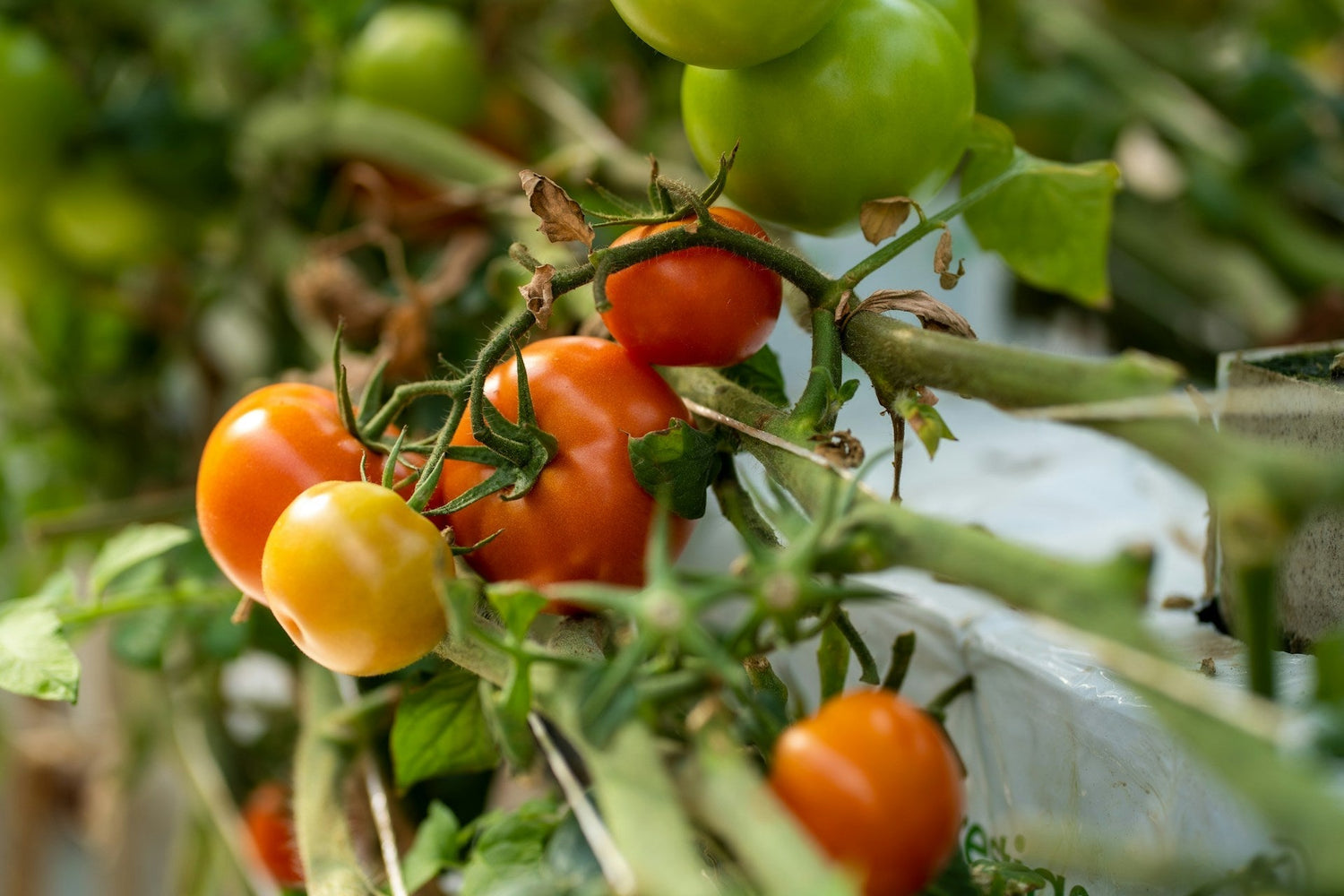👩🌾 Vinutha C N
M.Sc. Horticulture
Soil Doctor
How to Control Tomato Pests Organically
Growing juicy, ripe tomatoes is a gardener’s delight but pest infestations can quickly destroy your harvest. While chemical pesticides offer quick results, they often harm soil health and beneficial insects. Fortunately, organic pest control offers an effective, eco-friendly way to protect your tomato plants and enjoy safe, chemical-free produce.
Why Choose Organic Pest Control?
Going organic isn’t just safer for your family—it builds a more resilient garden. Chemical sprays may kill pests, but they also damage beneficial insects like ladybugs and pollinators, disrupt soil biology, and leave residues on your produce. Organic methods, on the other hand, support biodiversity, enrich soil life, and lead to healthier, tastier tomatoes.
Build a Strong Organic Defense
1. Strengthen Soil with Organic Inputs
- Compost Enrichment: Add organic compost to improve soil structure, retain moisture, and supply slow-release nutrients for healthy plants.
-
Use Microbi Dr. Soil Bio-inputs: These introduce beneficial microbes that:
- Fix nitrogen from the air
- Unlock phosphorus and potassium
- Produce plant growth hormones
- Boost natural pest resistance by strengthening the plant immune system
- Crop Rotation: Rotate tomatoes with non-solanaceous crops to break pest cycles.
- Mulching: Apply organic mulch to conserve moisture, reduce weeds, and block crawling pests.
2. Attract Beneficial Insects
-
Companion Plants: Grow herbs and flowers like:
- Marigolds – repel nematodes and aphids
- Dill – attracts ladybugs and lacewings
- Basil – repels whiteflies and may enhance tomato flavour
- Garlic/Onions – deter slugs and aphids
- Create Insect Habitats: Leave undisturbed garden edges and avoid chemical sprays to support good bug populations.
3. Physical Barriers & Hygiene
- Row Covers: Protect young plants from hornworms and beetles.
- Garden Cleanliness: Remove fallen fruits, dead leaves, and weeds to reduce pest hiding spots.
- Proper Spacing: Improve air circulation to reduce disease and pest risks.
Targeted Organic Pest Control
1. Manual Removal
- Hornworms: Pick by hand and drop into soapy water.
- Slugs & Snails: Trap them using inverted citrus peels overnight.
2. Organic Sprays
- Insecticidal Soap: Mix 1–2 tbsp mild soap in 1 gallon of water to control aphids, mites, and whiteflies.
- Neem Oil: Use neem oil diluted with water and mild soap to disrupt pest feeding and reproduction. Spray every 7–14 days.
- Hot Pepper Spray: Blend 2 tbsp hot sauce, a few drops of soap, and 1 liter water. Strain before spraying.
- Bacillus Thuringiensis (Bt): Natural bacterial solution for caterpillars like hornworms. Safe for pollinators.
- Beauveria Bassiana: Fungal spray that kills soft-bodied pests. Non-toxic to beneficials.
- Metarhizium Anisopliae: Natural fungus effective against beetles and soil-dwelling pests.
3. Sticky Traps
- Use yellow sticky traps to catch whiteflies, thrips, and aphids around plants.
Conclusion: Sustainable Tomato Pest Control with Dr. Soil
Controlling pests organically is a long-term investment in garden health. With healthy soil, natural predators, and targeted remedies, your tomato plants can thrive without chemicals. Tools like Microbi Dr. Soil Bio-inputs enhance microbial life, improve plant immunity, and foster a balanced garden ecosystem.
Remember, the goal isn’t a pest-free garden—but a self-sustaining one where nature helps protect your crops. Practice patience, consistency, and care, and enjoy tomatoes that are healthy for your family and the planet.
"Use sticky traps to protect your crops from pests."
"Border crops protect main crops from pests and enhance soil fertility."
Download the Dhatu App
Get expert tips, connect with verified retailers, and manage your crops with the Dhatu mobile app:



